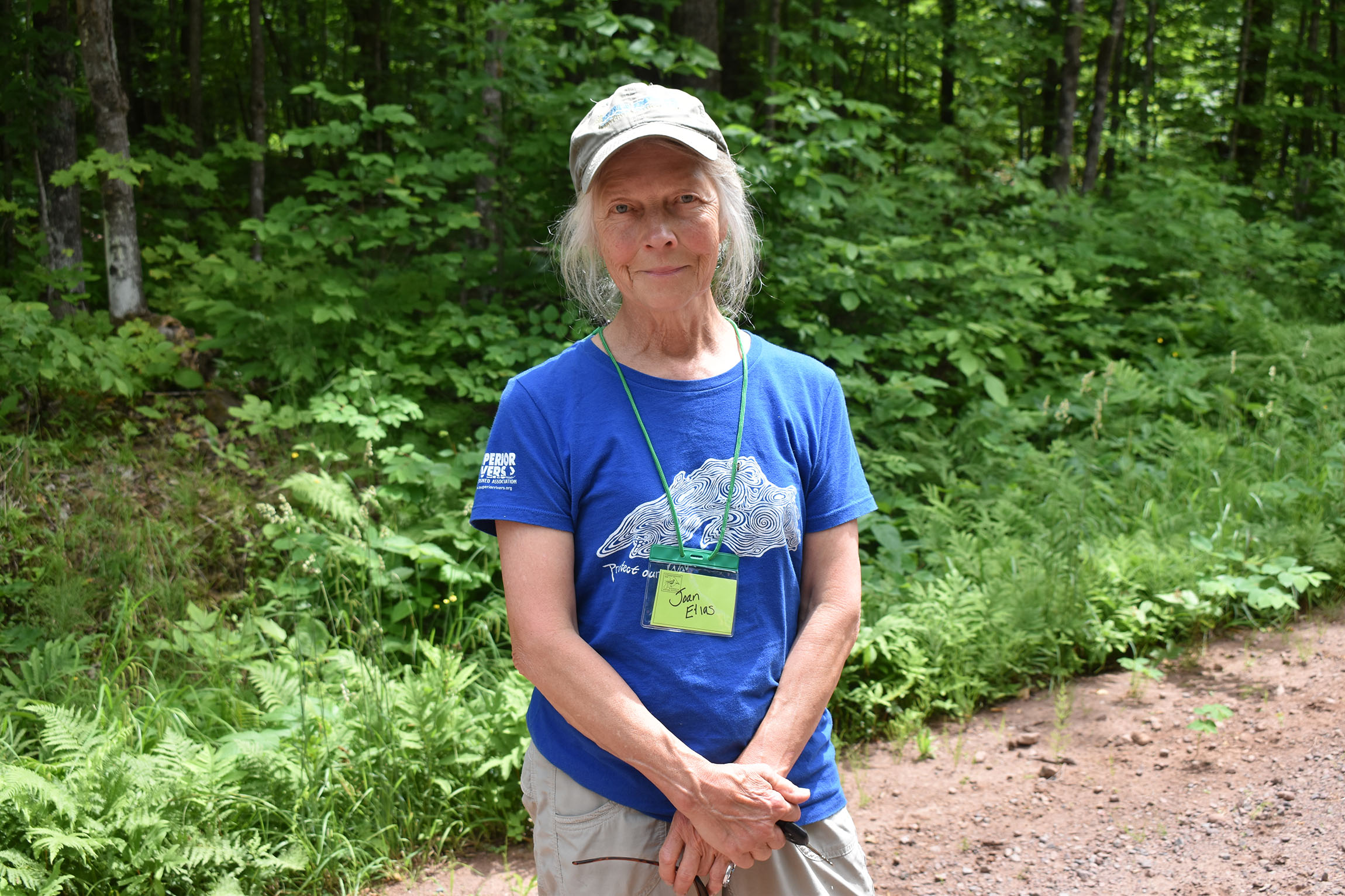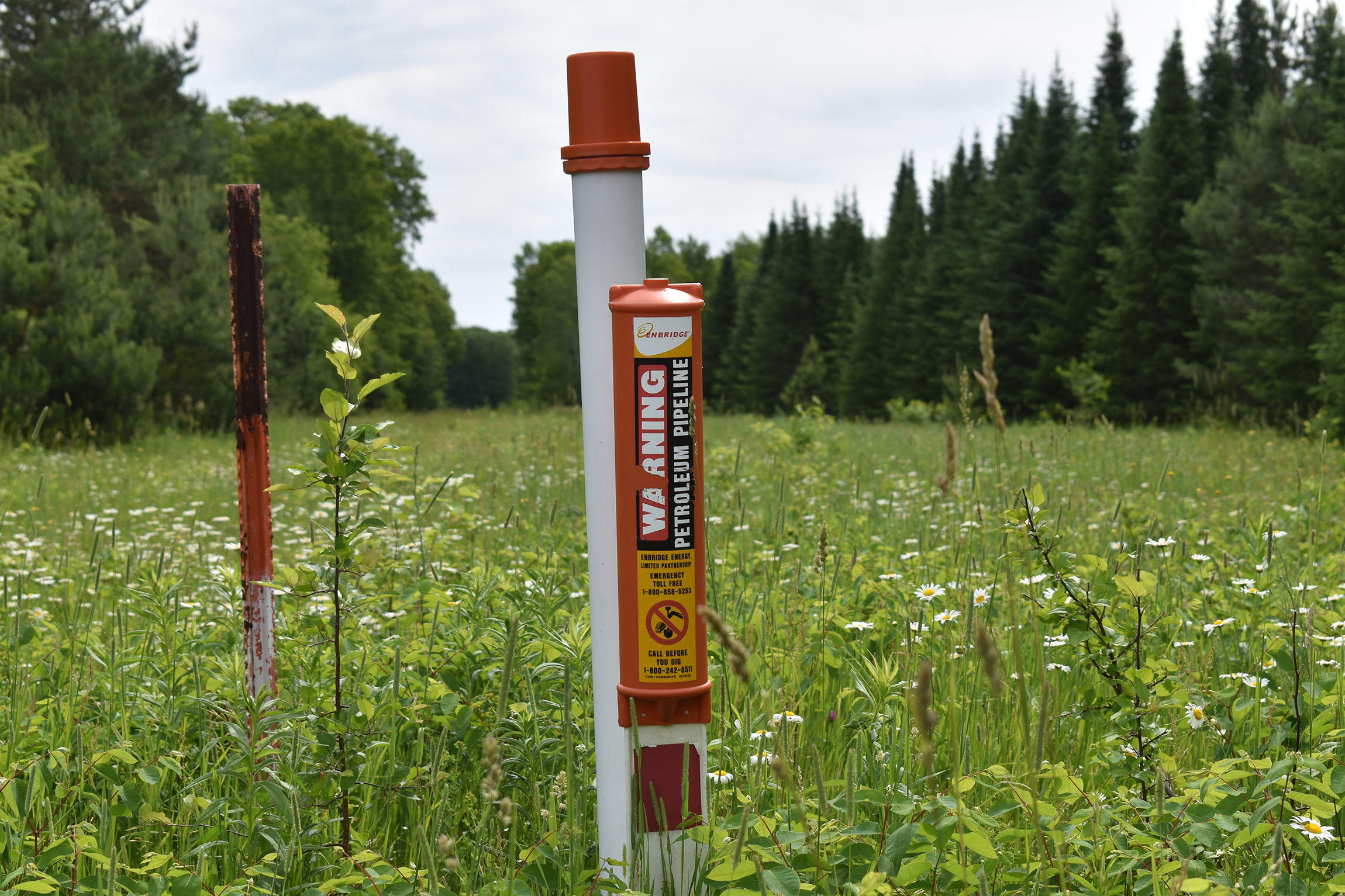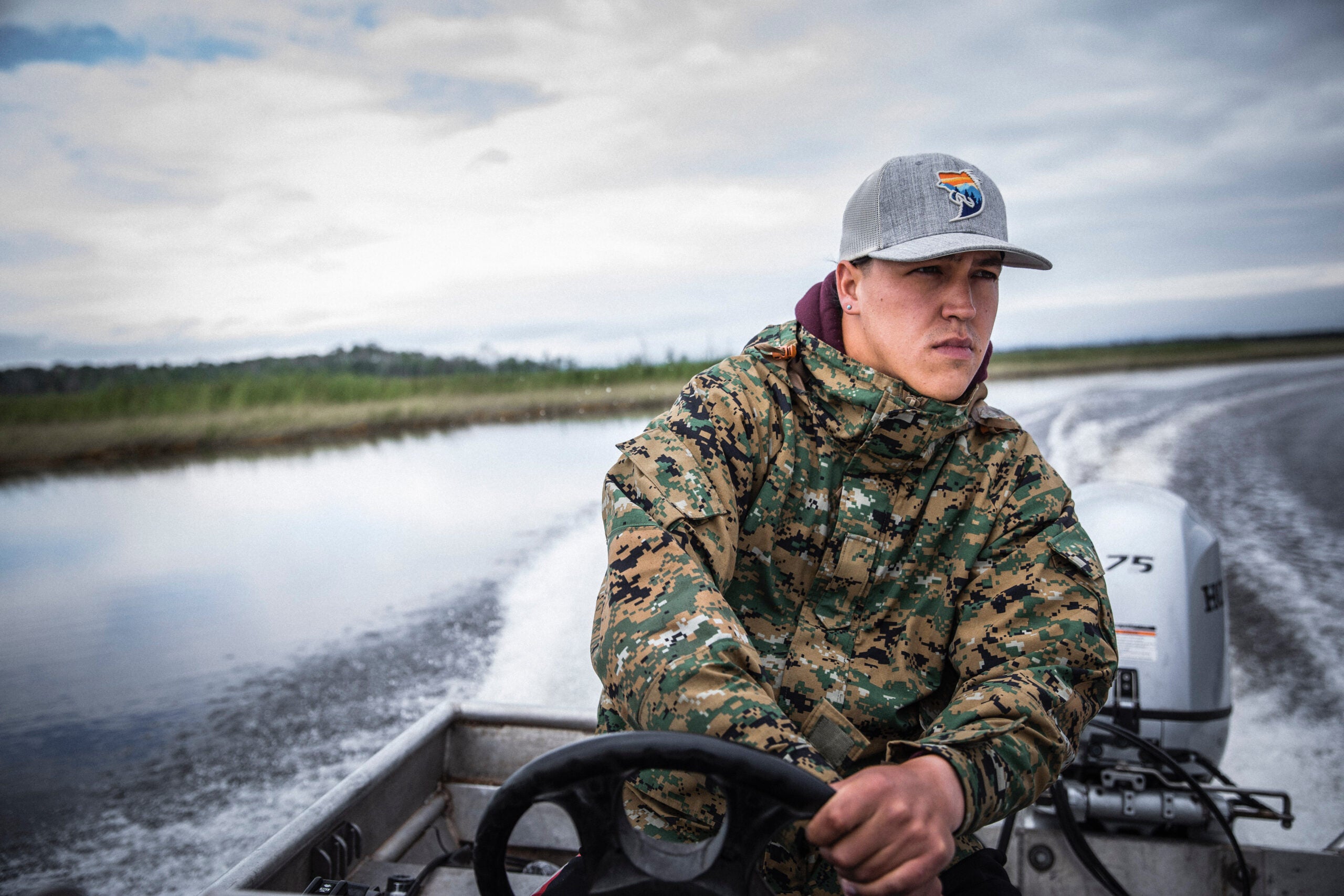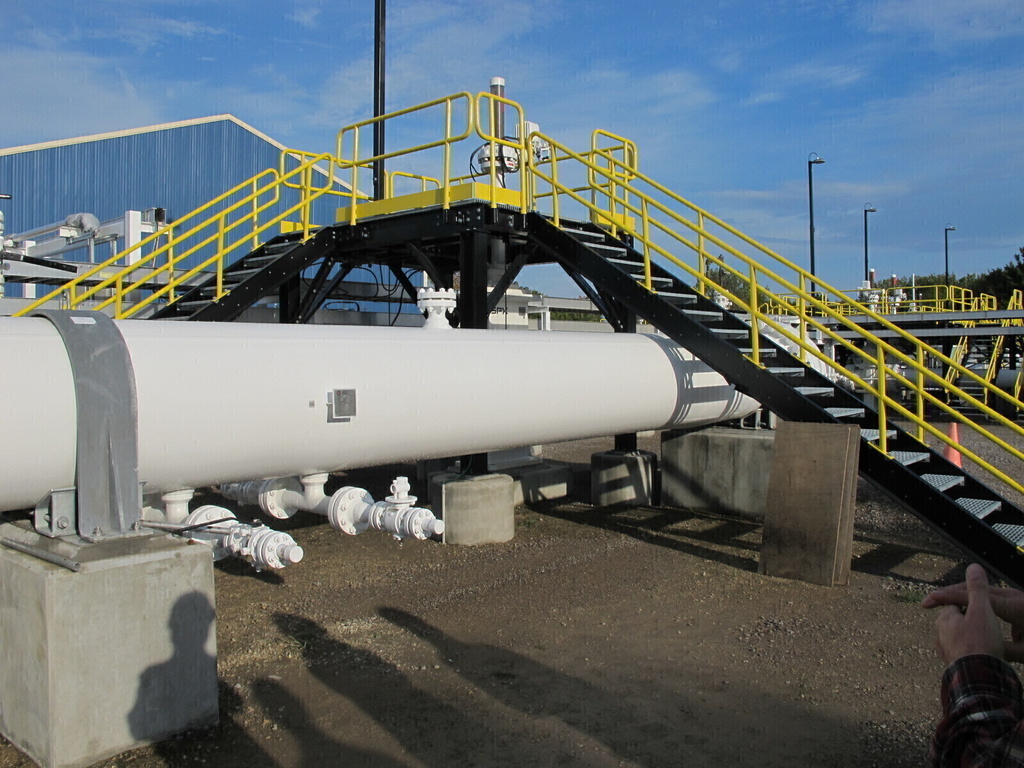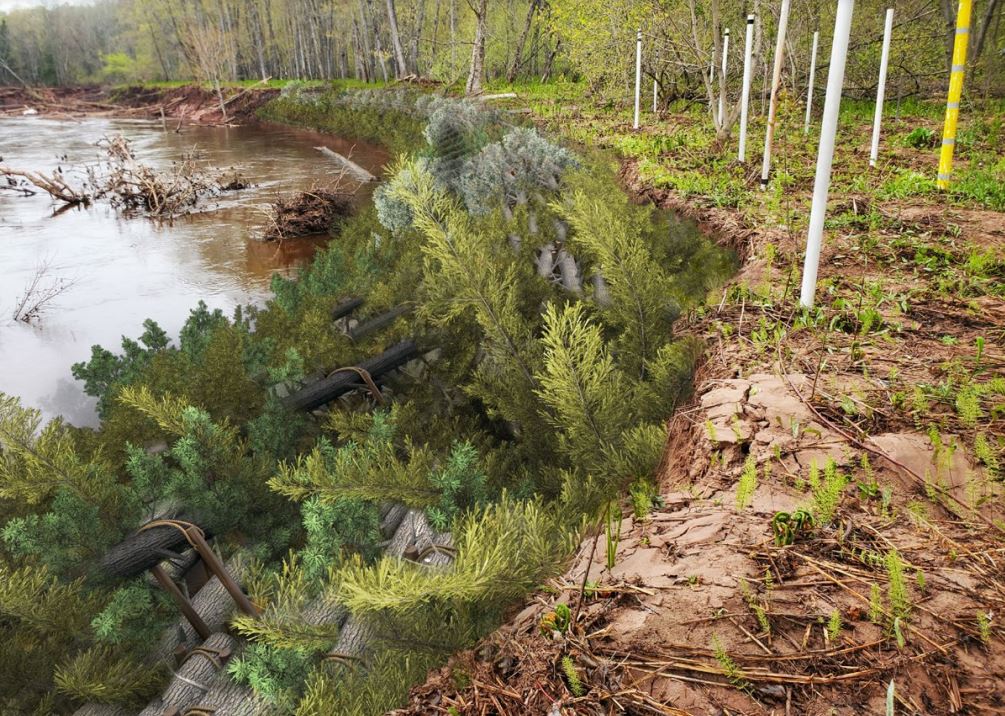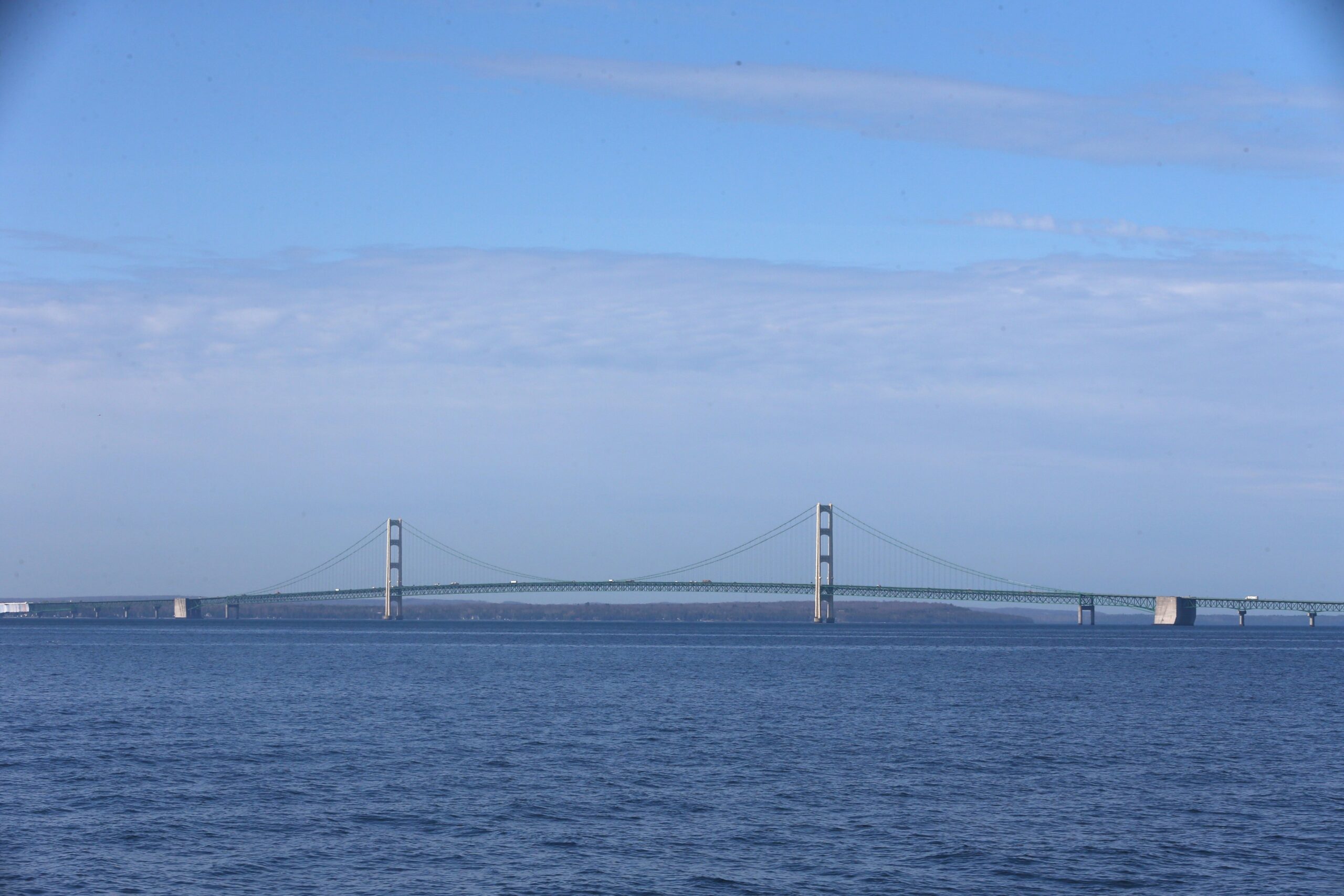With the sun blazing overhead, tribal and environmental advocates gathered one June morning along a gravel road where a Canadian energy firm’s pipeline crosses a northern Wisconsin tribe’s reservation.
The site is part of a 12-mile stretch where the Bad River Band of Lake Superior Chippewa has been embroiled in a yearslong legal battle with Enbridge Inc., to remove Line 5 from tribal lands. The pipeline spans 645 miles from Superior across northern Wisconsin and Michigan before ending in Sarnia, Ontario. It carries up to 23 million gallons of Canadian crude oil and natural gas liquids each day.
The tribe’s legal challenge, first mounted in 2019, is now entering its fourth year as Enbridge seeks state and federal permits to build a new 30-inch pipeline that would run roughly 41 miles around the tribe’s reservation. For tribal officials and activists, the tour of the pipeline’s route presented an opportunity to see the potential risks of the project firsthand.
Stay informed on the latest news
Sign up for WPR’s email newsletter.
Naomi Tillison, the tribe’s director of the Mashkiiziibii Natural Resources Department, said the tribal council previously rejected renewal of pipeline easements due to the threat of an oil spill.
“That’s why the council said we are not going to do these,” Tillison said. “We need to protect our water. We need to protect our wild rice beds. We need to protect our fisheries.”
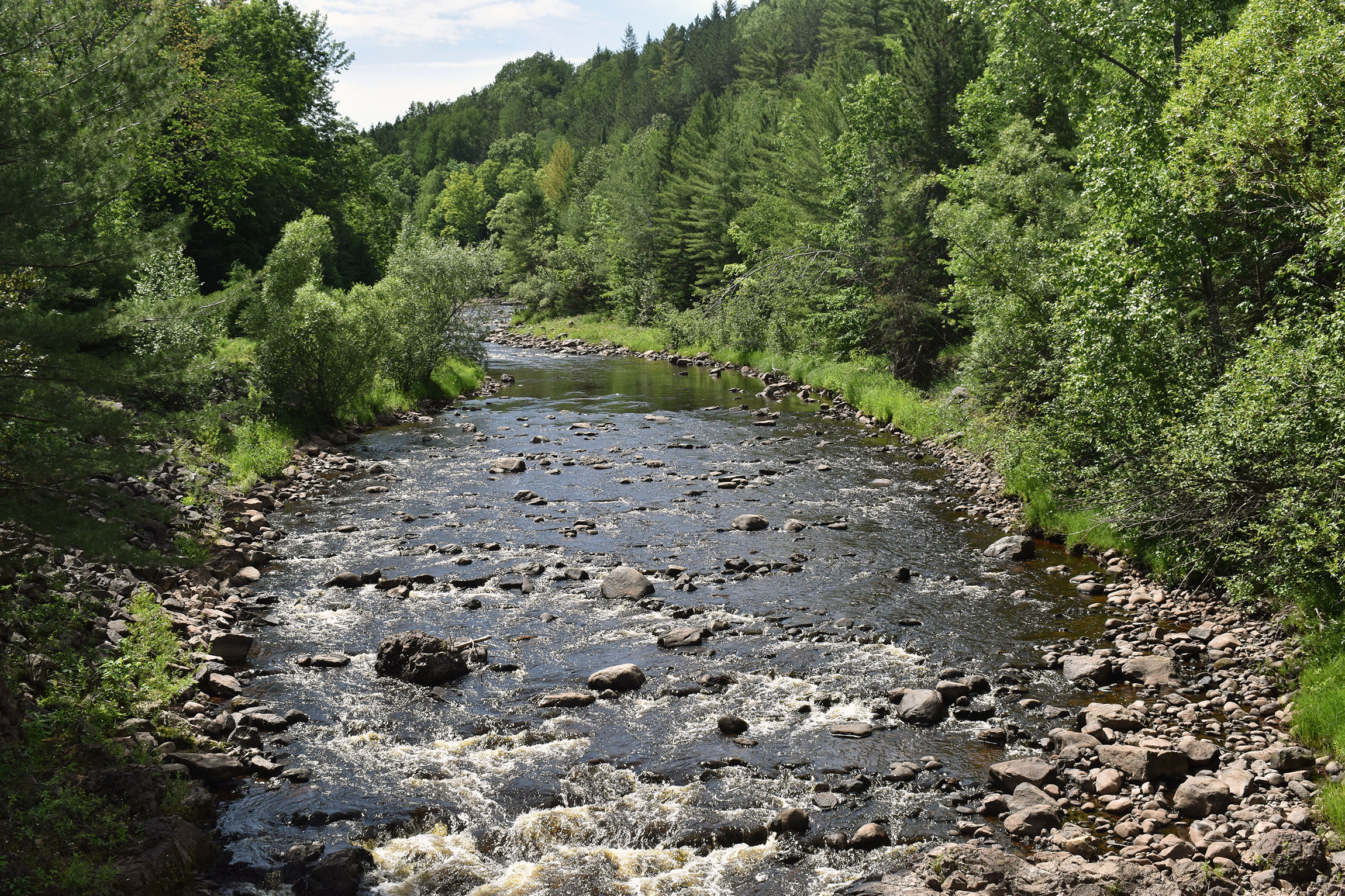
The Wisconsin Department of Natural Resources is the lead state agency permitting the $450 million project. In December, it released a draft environmental review of the company’s plan that critics blasted as incomplete and flawed.
Now, the U.S. Environmental Protection Agency says the state’s review failed to fully analyze the ways in which the project could harm the environment, as well as tribal resources and treaty rights.
“We think that many of the comments we’ve provided to take climate change into account, and to do a much more thorough review of the potential impact on tributaries and on those wetlands, will assist in a better review,” EPA’s Regional Administrator Debra Shore told Wisconsin Public Radio’s “The Morning Show.”
In March, the EPA sent a 31-page letter with nearly 200 recommendations for the DNR to strengthen its review as part of preparing a final environmental impact statement. Federal regulators say the state failed to fully analyze the risk of spills, tribal resources and treaty rights, the effects of climate change, and whether the project would violate state and tribal water quality standards.
The EPA has shared authority with the U.S. Army Corps of Engineers to ensure those who apply for permits meet requirements under the Clean Water Act. The federal agency has invoked its authority to request that Enbridge’s application receives a higher level of review, and the EPA has been meeting with the Army Corps and DNR to ensure the agency’s concerns are addressed.
Federal regulators want DNR to show project wouldn’t violate water quality, treaty rights
The EPA doesn’t normally weigh in on state reviews, according to Jen Tyler, a supervisor who oversees federal environmental law within EPA’s Tribal Programs Office in Chicago. Tyler said the DNR invited the federal agency to weigh in on its draft.
“EPA continues to have concerns about potential significant impacts, particularly to waters that are essential to the exercise of tribal treaty rights and continuation of tribal traditional lifeways,” Tyler said.
EPA staff told the DNR and U.S. Army Corps of Engineers in letters this spring that the proposed project may have “substantial and unacceptable” impacts on the Bad River and Kakagon-Bad River Sloughs, which they say hold national and international importance.
The EPA’s concerns about the project’s effects on high-quality waters and wetlands validate doubts expressed by tribal and environmental advocates, who argue the proposed route can’t be built without significant environmental harm.
At Copper Falls State Park, the Tyler Forks River cascades down to join the Bad River. At a perch overlooking the falls, Tillison said the Bad River is one of few sites on Lake Superior that support spawning for lake sturgeon. And the Kakagon-Bad River Sloughs represents around 16,000 acres of internationally recognized wetlands. Federal officials say the sloughs are home to the largest wild rice bed on the Great Lakes.
“That’s really, really important to the Bad River tribal members. It’s part of the migration story where they migrated to find the food that grows on water,” said Tillison.
[[{“fid”:”1749466″,”view_mode”:”embed_landscape”,”fields”:{“format”:”embed_landscape”,”alignment”:”right”,”field_image_caption[und][0][value]”:”%3Cp%3EThe%20Tyler%20Forks%20River%20cascades%20down%20into%20the%20Bad%20River%20at%20Copper%20Falls%20State%20Park%20on%20Friday%2C%20June%2024%2C%202022.%3Cem%3E%20Danielle%20Kaeding%2FWPR%3C%2Fem%3E%3C%2Fp%3E%0A”,”field_image_caption[und][0][format]”:”full_html”,”field_file_image_alt_text[und][0][value]”:”Brownstone Falls”,”field_file_image_title_text[und][0][value]”:”Brownstone Falls”},”type”:”media”,”field_deltas”:{“3”:{“format”:”embed_landscape”,”alignment”:”right”,”field_image_caption[und][0][value]”:”%3Cp%3EThe%20Tyler%20Forks%20River%20cascades%20down%20into%20the%20Bad%20River%20at%20Copper%20Falls%20State%20Park%20on%20Friday%2C%20June%2024%2C%202022.%3Cem%3E%20Danielle%20Kaeding%2FWPR%3C%2Fem%3E%3C%2Fp%3E%0A”,”field_image_caption[und][0][format]”:”full_html”,”field_file_image_alt_text[und][0][value]”:”Brownstone Falls”,”field_file_image_title_text[und][0][value]”:”Brownstone Falls”}},”link_text”:false,”attributes”:{“alt”:”Brownstone Falls”,”title”:”Brownstone Falls”,”class”:”media-element file-embed-landscape media-wysiwyg-align-right”,”data-delta”:”3″}}]]
The EPA wants the DNR to provide an analysis showing Enbridge’s plans wouldn’t negatively affect state and tribal water quality standards. An Enbridge spokesperson said in a statement that input from agencies and the public will only make the project better.
“Enbridge is committed to protecting the environment — and has proposed a 41-mile reroute, chosen because it minimizes environmental impacts and protects critical resources,” said Michael Barnes, an Enbridge spokesperson. “Less than one-tenth of an acre of wetlands will be permanently impacted by the project.”
The EPA finds that impact is closer to 34 acres of mostly forested wetlands that would be permanently changed into emergent wetlands.
The EPA has also asked the state to further address how the project may affect tribal treaty rights to hunt, fish and gather along the route.
In 2019, a bipartisan group of lawmakers made it a felony for anyone to access an energy provider’s property without consent except in limited circumstances.
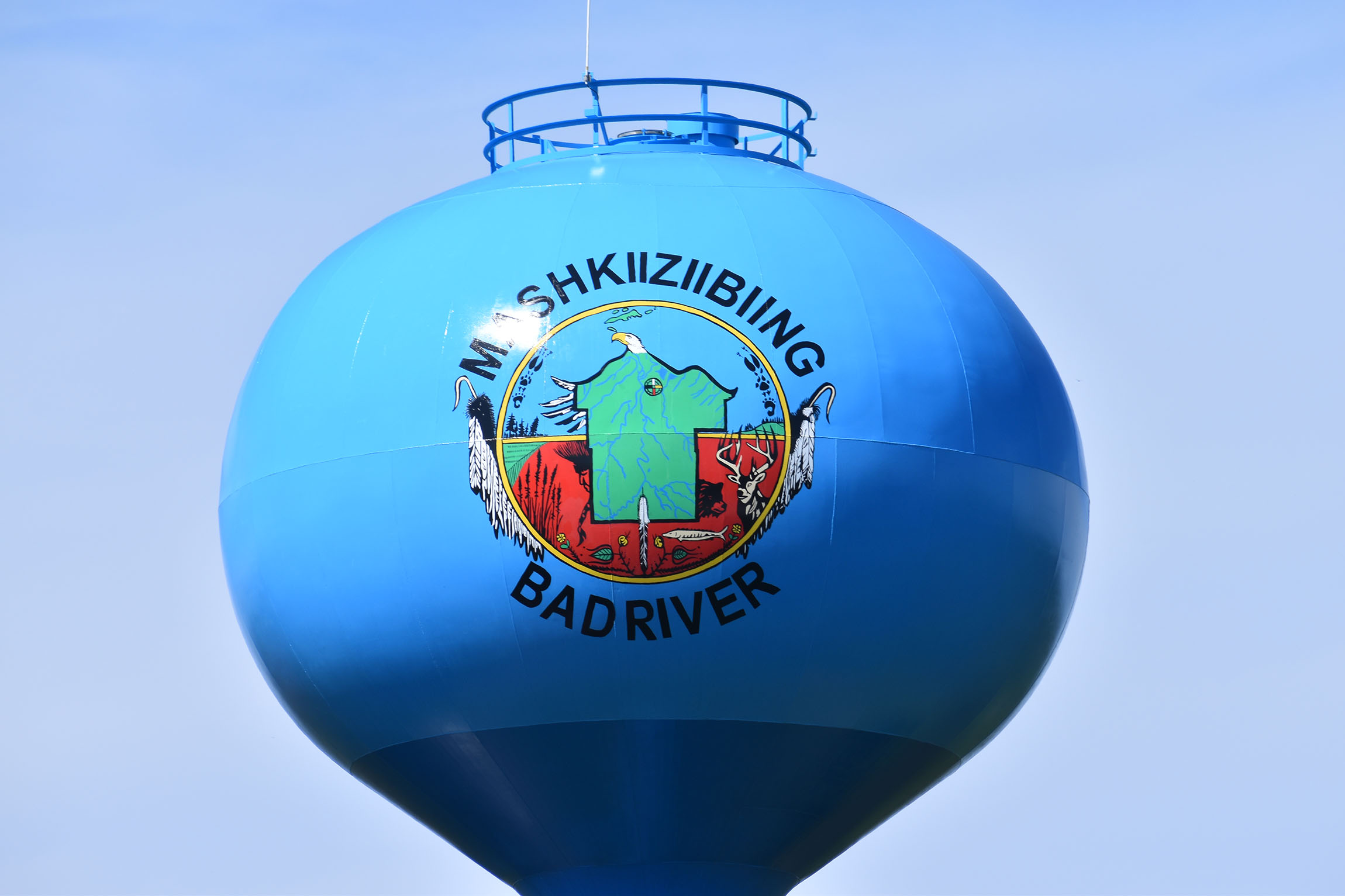
Danielle Kaeding/WPR
Under that law, the Great Lakes Indian Fish and Wildlife Commission estimates the project would eliminate tribal access to roughly 43 acres of Iron County Forest.
“For folks who just don’t have a lot of resources, it is not in the best interest of tribes to diminish any sort of access,” said Dawn White, a treaty resources specialist with the Commission who is also a Lac Courte Oreilles tribal member. “It would just be a big disservice for that alone.”
Enbridge has said the company will not bar tribal members from lawfully exercising treaty rights where the route crosses public land. However, the company said access to the route’s right-of-way will be restricted during pipeline construction to ensure public safety. The EPA wants the state to clarify where Enbridge would limit access during construction and operations.
The risks of the project to groundwater is another concern. The pipeline also runs within 120 feet of at least 53 private wells. Iron County resident Bobbi Rongstad, who lives 40 acres from the proposed route, said she fears her well may be affected by drilling to install the pipeline during construction.
“If they hit one of those underground aquifers, that water can come spurting up at the surface,” Rongstad said. “Then that aquifer might not be under pressure anymore, or the people who have their wells in that aquifer might not get water anymore.”
Rongstad noted Enbridge breached aquifers during construction of the Line 3 replacement project in northern Minnesota. In March, the Minnesota Department of Natural Resources reported nearly 300 million gallons of groundwater had been released after crews ruptured three aquifers while building the line.
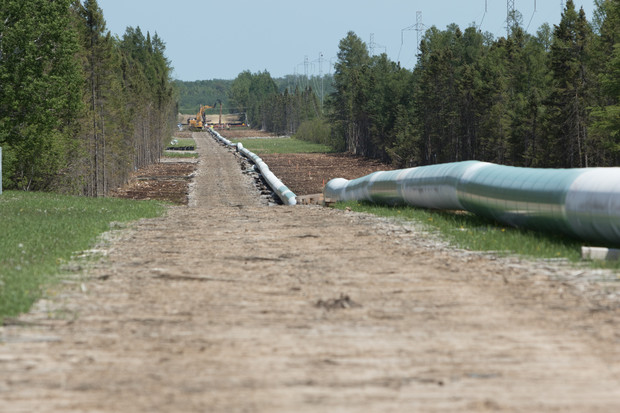
In a flood-prone region, pipeline could carry additional risks
In the past decade, northern Wisconsin has witnessed three floods that are only supposed to occur once every 500 to 1,000 years.
Scientists have found climate change is increasing the frequency and intensity of rains, and environmental advocates say the state’s draft failed to fully account for those changing conditions.
Evidence of the devastation could still be seen in the Bad River watershed as tribal and environmental advocates trekked through tall grass into a wooded ravine along the pipeline route. Joan Elias points out railroad tracks dangling in the air as Edwards Creek trickles along under them.
Elias, who owns 190 acres near the proposed route, said she was temporarily stranded after around 10 inches of rain turned streams like this one into raging rivers one night in July 2016.
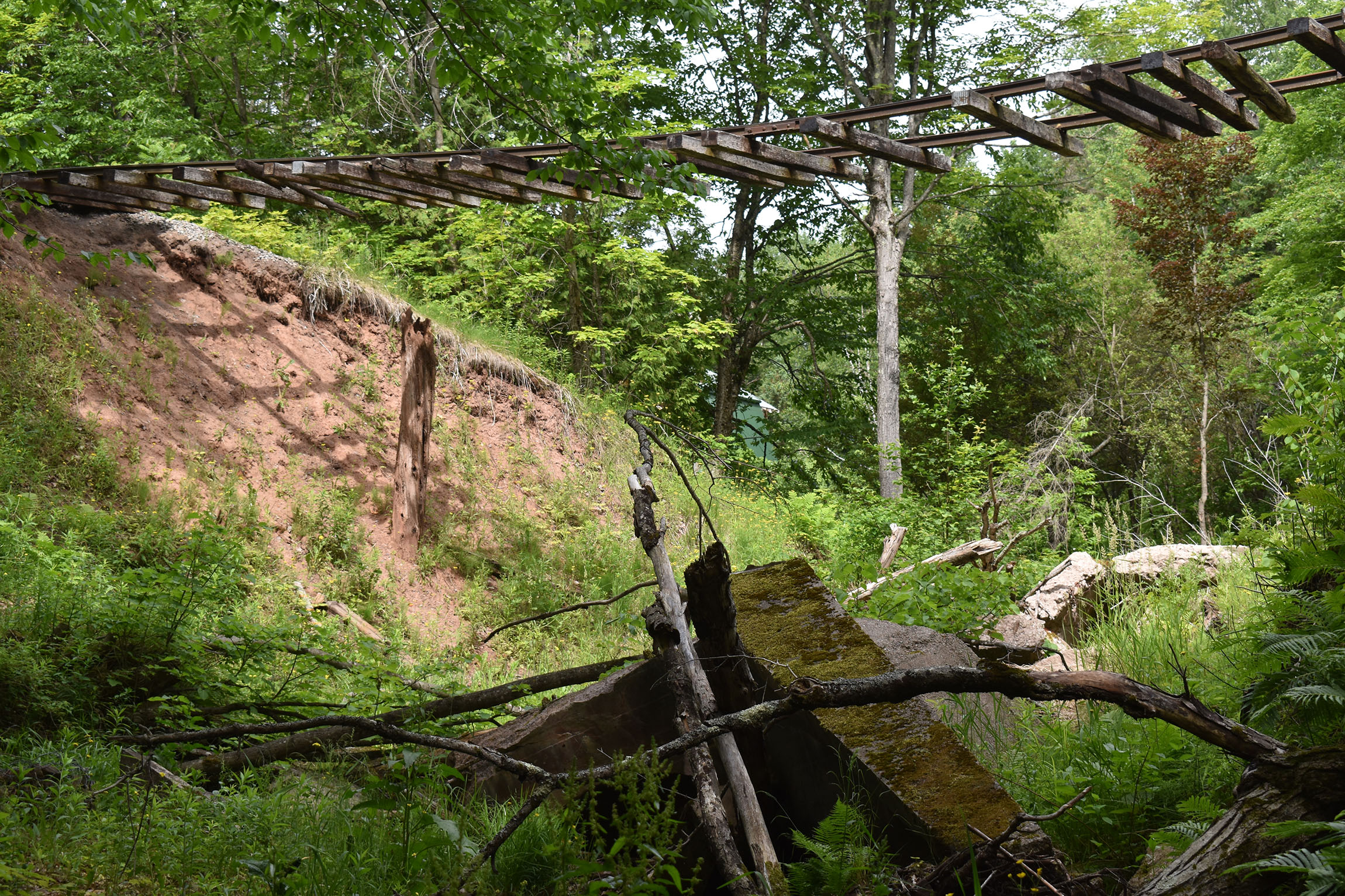
“It was washed out in both directions on Highway 169. It was washed out along little Edwards Road. It was washed out here,” said Elias, noting it took months to repair some roads.
The region’s red clay soils don’t quickly absorb water, causing rains to rapidly run off and scour the landscape. Opponents say more frequent, intense storms only increase the threat of a spill along the pipeline.
“It’s more likely to happen when there’s going to be a storm and just more kinetic energy carrying a spill further downstream,” said Tony Wilkin Gibart, executive director of Midwest Environmental Advocates.
The risks of those changing conditions were highlighted when the Bad River tribe discovered a 40-foot span of Line 5 that became exposed in August of 2019. Tillison said the segment was mostly unsupported underneath as rapid flows quickly erode the region’s streams and riverbanks, especially after extreme storms.
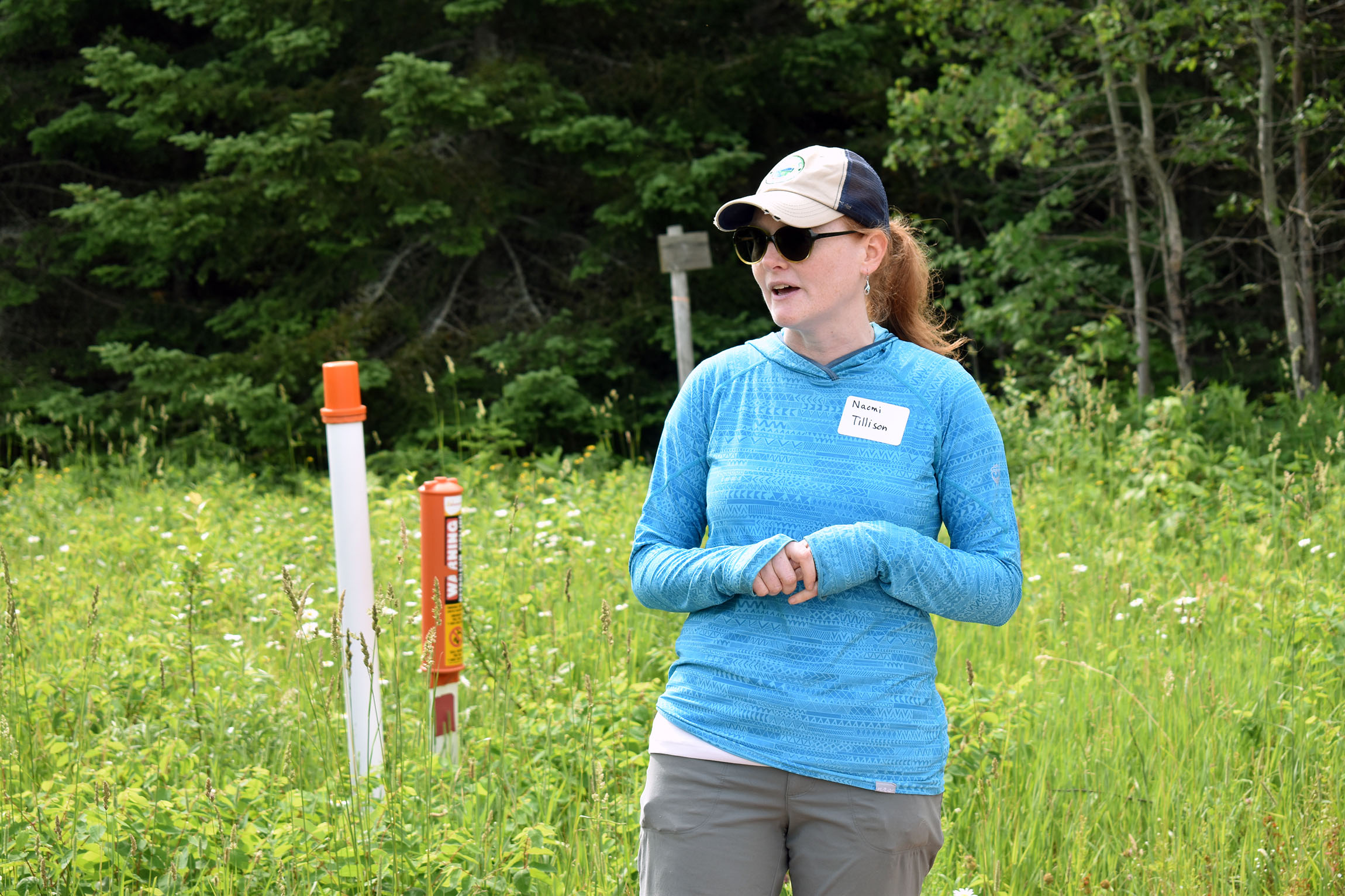
Enbridge has said it will adhere to the best environmental practices, noting the company will utilize erosion control and spill prevention measures outlined in its environmental protection plan. While that plan includes detailed steps to address erosion and spills, it doesn’t reference climate change.
The EPA is recommending the DNR strengthen its review of the effects that climate change may have on the project, and how climate change affects the risk of erosion and exposure to the pipeline. Federal regulators also want the state to quantify direct and indirect greenhouse gas emissions for all routes proposed by Enbridge, including upstream and downstream emissions from oil and natural gas production to burning fossil fuels.
Next steps for agencies permitting the project
The EPA doesn’t have a lead role permitting the project. Even so, the agency is coordinating with the DNR and Army Corps, which is the federal agency permitting the project under the Clean Water Act.
The Army Corps is regulating construction-related activities in federal waters, as well as Enbridge’s proposal to drill underneath the White River.
The Corps’ Regulatory Division Deputy Chief Rebecca Graser said they’ve been working closely with the EPA to ensure that the agency is collecting information to address potential concerns.
“Our goal is to make sure that the concerns that are addressed are resolved, whether it’s under our authority, or whether it’s under the state’s authority,” Graser said.
The EPA’s Tyler expects many of the agency’s recommendations will be addressed in the DNR’s final environmental impact statement, which federal regulators will review. The DNR said they’re addressing issues with those agencies, as well as other interested parties and Enbridge.
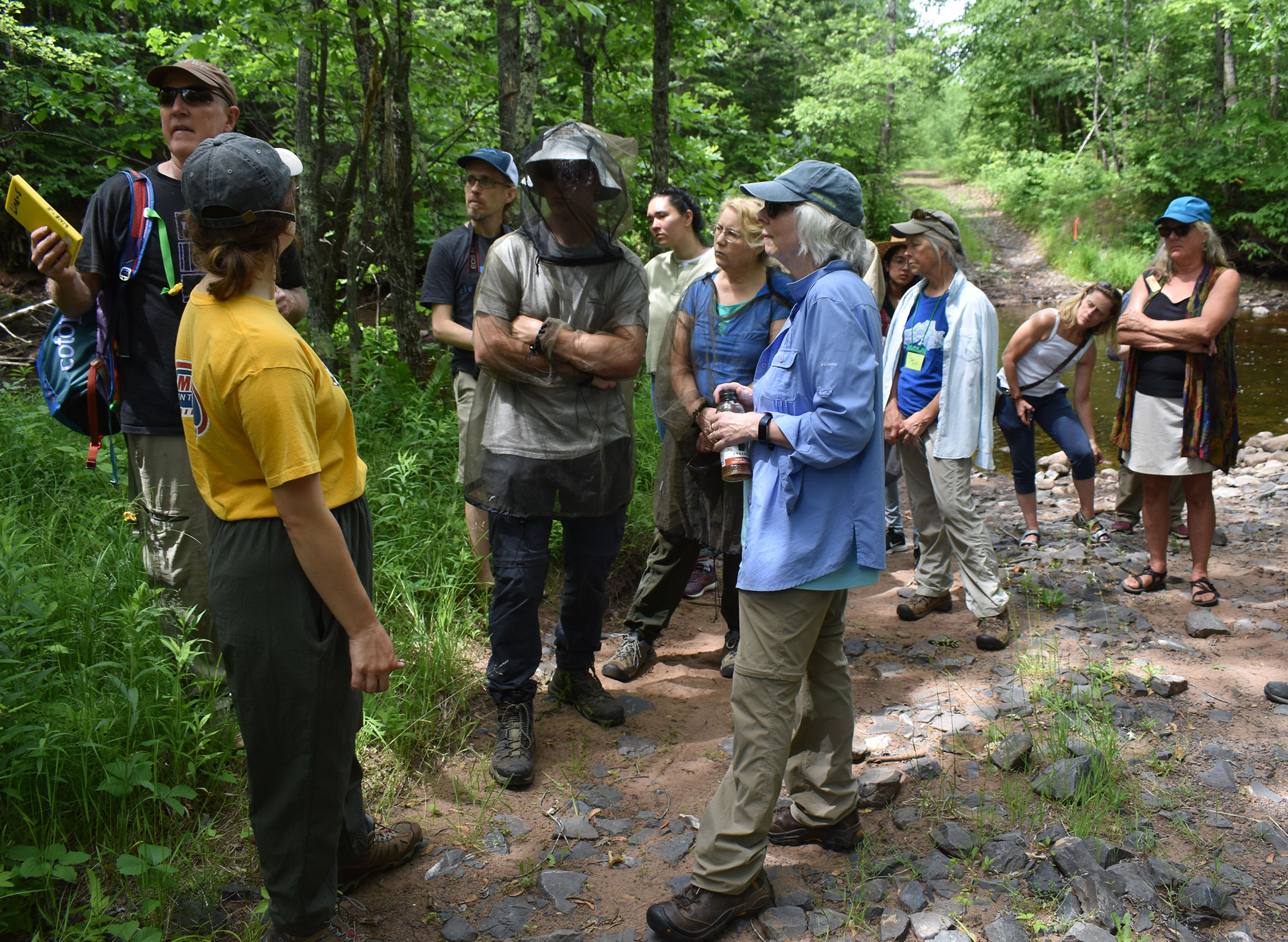
Ben Callan, who oversees a DNR team that reviews utility and energy projects, said the agency has received more than 30,000 comments on the company’s proposed route. That’s the most he’s seen in nearly two decades managing utility and energy projects.
Meanwhile, Enbridge touted the economic benefits the project will have on the state and region. The company announced in April that Michels Pipeline, Inc. signed a letter of intent to be the main contractor for the project. The company is owned by Michels Corporation. Tim Michels announced his candidacy as a Republican running for governor against Gov. Tony Evers in April.
“The project will be built by a Wisconsin contractor and a trained union workforce — creating 700 family-supporting union construction jobs,” said Barnes. “An estimated $46 million will be spent specifically with Native-owned businesses and communities.”
Enbridge experts have said in court filings that shutting down Line 5 would increase gas, diesel and jet fuel costs by an estimated $20 million each year in Wisconsin and $30 million annually in Michigan. Propane costs are anticipated to increase by at least $4 million per year for Wisconsin consumers and $38 million each year for Michigan customers.
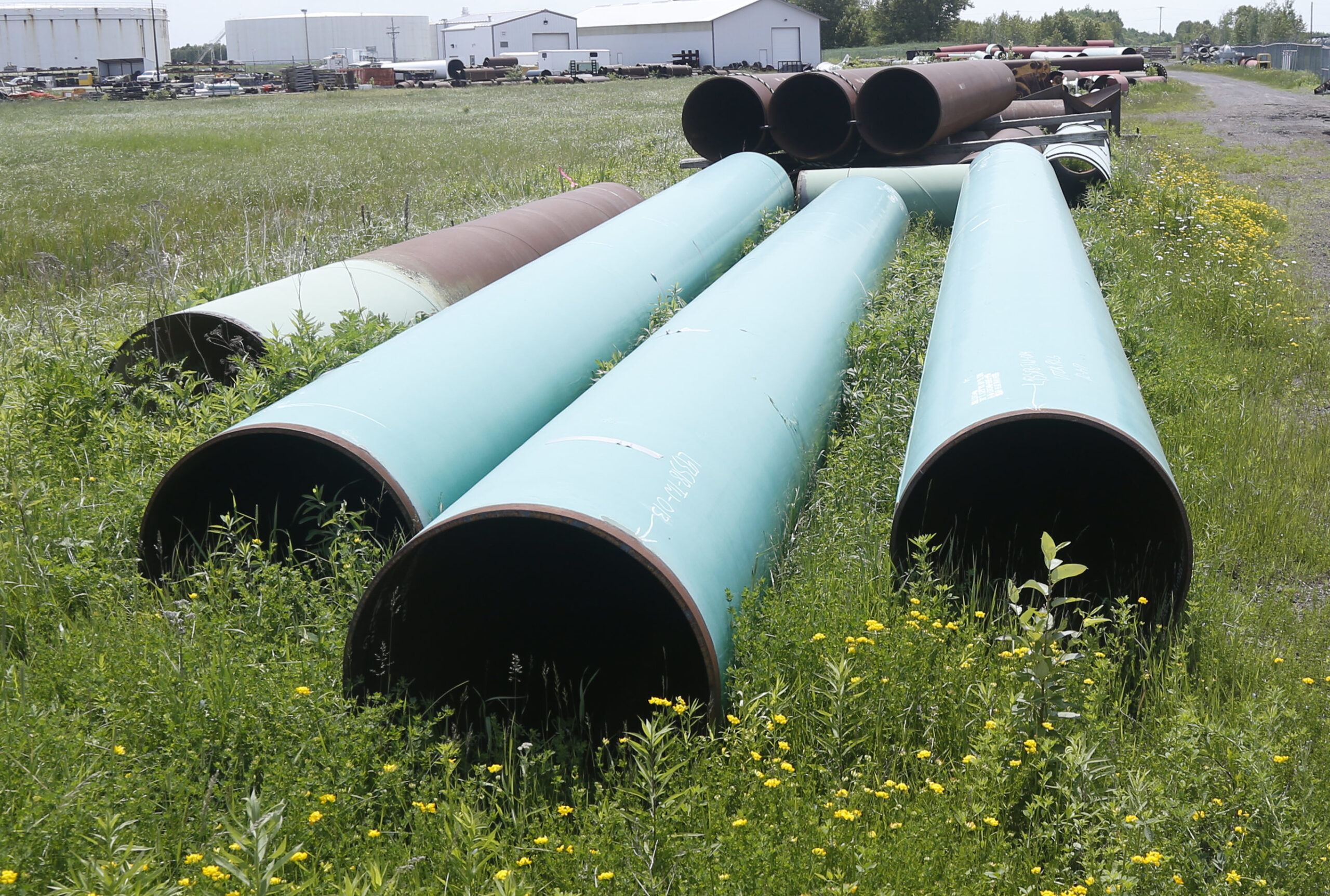
A University of Wisconsin economics professor estimated an annual loss of more than 6,000 jobs and roughly $5 billion in lost economic output due to reduced production or closure of refineries in the Upper Midwest. Experts for the tribe dispute those findings.
The Canadian firm stresses the 69-year-old pipeline is safe and a vital energy link for the region. Business Manager Joel Zielke with the Local 601 Steamfitters Union agrees.
“That’s a lot of gas and diesel and propane for people that really rely on that at this point still,” said Zielke. “We know, someday, we will be able to disconnect ourselves from that, but we’re not quite ready yet.”
Enbridge plans to break ground once all permits are granted. But it’s clear federal regulators want to know much more before they make any final decisions.
Editor’s note: This story previously reported that the EPA found around 34 acres of wetlands would be permanently destroyed. The story has been updated to clarify that 34 acres of mostly forested wetlands would be permanently converted into emergent wetlands.
Wisconsin Public Radio, © Copyright 2024, Board of Regents of the University of Wisconsin System and Wisconsin Educational Communications Board.

